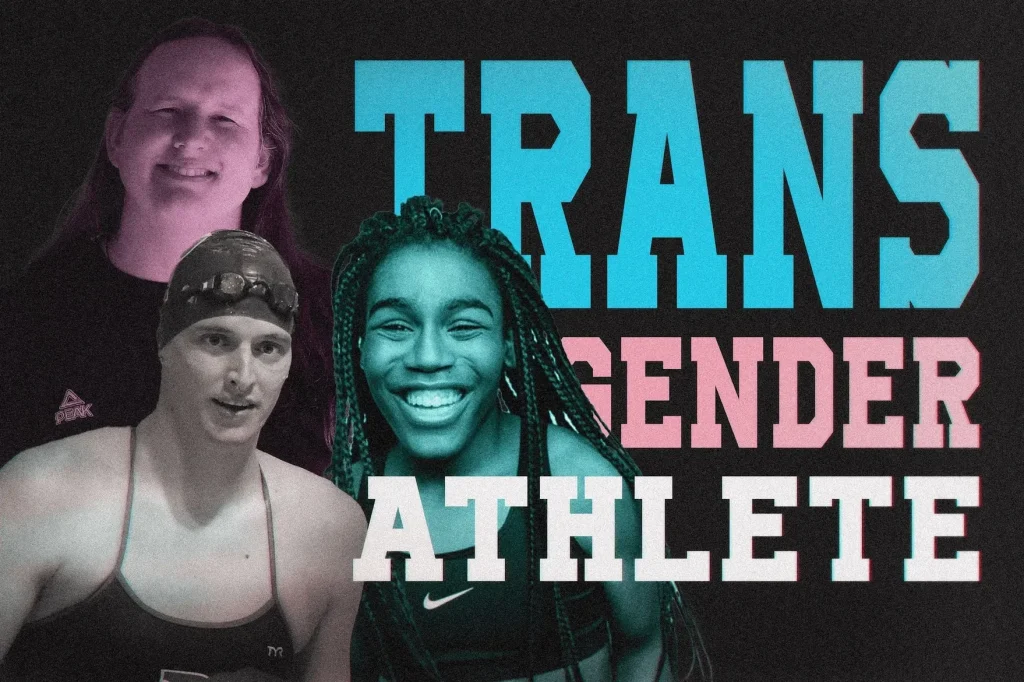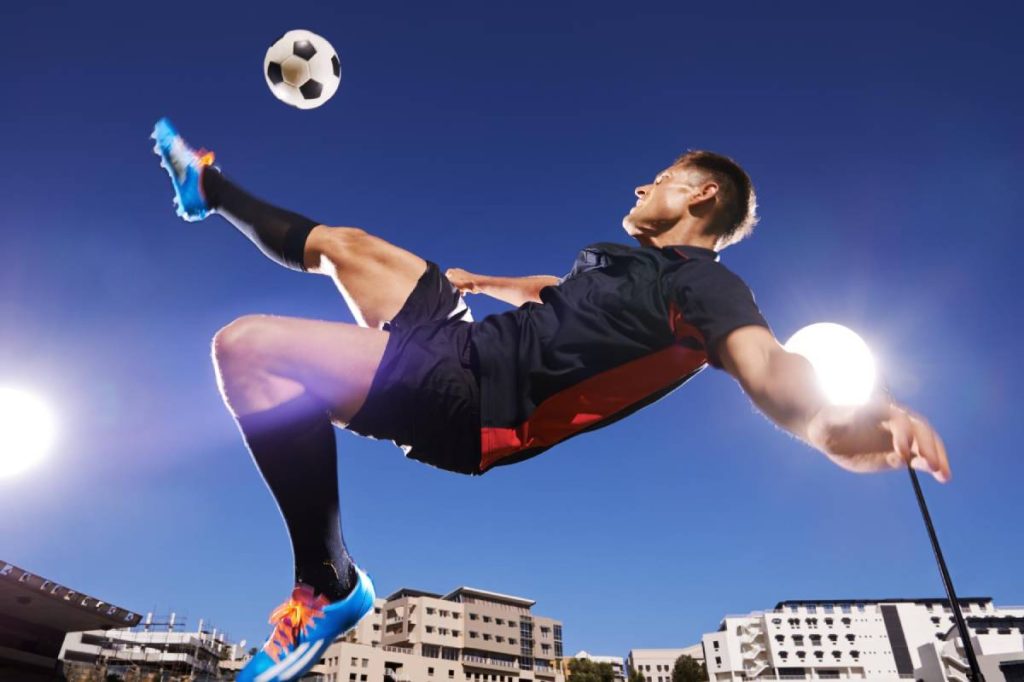The ongoing conversation about trans athletes and girls sports is becoming an influential topic across the United States, particularly as high school sports conferences navigate issues of inclusivity and fairness. Recently, the Tahoe Truckee Unified School District (TTUSD) made headlines by announcing its switch from Nevada’s high school sports conference to California’s, which allows transgender athletes to compete in girls’ events. This decision raises both advocacy for high school sports equity and concerns among girls athletes regarding their privacy and competitive balance. Critics argue that allowing trans athletes to participate in girls’ sports could compromise the hard work and dedication of female athletes, intensifying the debate about the integrity of women’s sports. As discussions continue, students, parents, and school officials are confronted with tough questions about how to ensure fair play while being inclusive in the ever-evolving landscape of athletics.
In recent years, the inclusion of transgender individuals in female athletics has sparked significant debate among sports enthusiasts and policymakers. The shift toward an inclusive approach in athletic competitions, especially at the high school level, poses challenges, notably in states like California, known for its progressive stance on such matters. Many advocates argue that all athletes, regardless of gender identity, deserve equal opportunities, but this has raised pressing questions regarding the implications for girls athletes’ safety and competitive fairness. The discussion is further complicated by logistical concerns surrounding travel and competition formats as districts reassess their affiliations with different sports conferences. As high schools like TTUSD evaluate their growing responsibility to balance equitable participation with the preservation of women’s sports, this evolving narrative is destined to change the face of youth athletics.
The Impact of the TTUSD Transition on Girls’ Sports
The decision of the Tahoe Truckee Unified School District (TTUSD) to transition from the Nevada sports conference to California’s high school athletics framework has sparked a critical dialogue about the future of girls’ sports. This move, influenced by a desire to align with California’s progressive stance on transgender inclusion, raises questions about equity and fairness for existing girls athletes. Advocates argue that allowing trans women to compete against cisgender girls undermines the hard work and dedication that female athletes have invested in their sports.
In light of the TTUSD’s impending switch to the California Interscholastic Federation (CIF), female athletes like Anna Holly and Kenzie Zilstorf have voiced concerns that their competitive integrity could be compromised. As girls’ sports navigate the complexities of inclusivity and representation, it becomes imperative that the policies governing sports ensure that athletes compete on a level playing field, considering both the physical advantages some trans athletes may possess due to differing biological attributes.
Concerns Over Privacy and Safety in Girls’ Sports
A significant concern emerging from the TTUSD’s transition is the privacy and safety of girl athletes. Comments made by students like Kenzie Zilstorf highlight fears of having to share locker rooms with trans athletes, raising questions about comfort and rights of privacy for female athletes. The implication that biological males may gain access to female spaces has invoked strong emotional responses and fears related to harassment or discomfort, pushing the envelope on what constitutes a safe sporting environment for girls.
The students’ voices resonate within a larger debate about the intersection of gender identity and sports. While the push for inclusivity is important, maintaining the privacy and comfort of girl athletes is equally vital. The potential for increased travel risks, especially during harsh weather conditions in regions like Donner Pass, compounds the concerns surrounding safety — both in terms of travel to events and the dynamics within locker rooms. As sports move forward, striking a balance between inclusivity for trans athletes and ensuring security for female athletes must be prioritized.
Travel Challenges for TTUSD Athletes Amid Transition
As Tahoe Truckee Unified School District (TTUSD) prepares to shift athletic affiliations, travel logistics have become a focal point for both student athletes and parents. Competing in the California Interscholastic Federation (CIF) means that athletes will likely experience longer travel durations and more complicated logistics due to the geographical challenges posed by their mountainous environment. Concerns over the hazards presented by Donner Pass in the winter create additional layers of concern regarding student safety during away games.
The transition to a new federation raises questions about not just the distance and timing of travel, but also about the scheduling of competitions amidst unpredictable weather patterns characteristic of the winter months in California. Stakeholders are worried that, alongside the implications for competitive performance, these travel issues could also exacerbate the pressure on athletes, particularly given the increased risks associated with inclement weather and the need for proper accommodations for all traveling students.
Trans Athletes: Striking a Balance in Competitive Advantage
The inclusion of trans athletes in girls’ sports raises critical discussions about competitive balance and inherent advantages. As voiced by athletes like Ava Cochram, the physical differences that can exist between trans women and cisgender females, such as muscle mass and lung capacity, form the crux of arguments against such inclusivity in sports. Critics stress that these differences can lead to an uneven playing field, challenging the foundational principle of fair competition in high school sports.
However, it is essential to usher in an era of dialogue that encompasses both respects for trans rights and the preserved integrity of women’s sports. Balancing these perspectives while implementing policies that enlist scientific insights around athletic performance will be crucial in shaping future regulations in high school sports conferences, not just in California but nationwide. The conversation must evolve, focusing not just on who competes, but how we fairly create opportunities for everyone involved.
CIF’s Stance on Transgender Athlete Inclusion
The California Interscholastic Federation (CIF) has positioned itself as a leader in championing inclusivity and equity in high school athletics, exemplified by their ongoing involvements in the discussion surrounding transgender athletes in sports. CIF defies certain national guidelines that conflict with California state laws, advocating for the rights of all student athletes to compete in an environment free from discrimination. This framework underscores California’s continuing push for comprehensive inclusion policies across various sporting domains.
Despite facing scrutiny from federal entities and opposition from various local stakeholders, CIF remains committed to its underlying mission promoting fair play for all students. This advocacy highlights the tension between state and federal regulations, evoking broader questions about educational equity and the future landscape of high school sports in states across the nation. By upholding the principle of inclusion, CIF stands at a crossroads where the sports community must consider the implications of its policies on competitive integrity and athlete safety.
High School Sports Equity and Legislation
As states grapple with legislation regarding transgender athletes’ participation in sports, the principle of equity remains at the forefront of the discussion. The decision by TTUSD to exit the Nevada Interscholastic Activities Association (NIAA) in favor of the CIF is emblematic of the complexities faced by educational institutions in executing policies that align with state laws and educational equity mandates. This transition illustrates how local decisions can be influenced by state and federal policies governing the rights of athletes.
With the persistent discussions on athletes’ rights spanning various demographics, maintaining an equitable approach in high school sports becomes paramount. Administrators and stakeholders are called upon to navigate this evolving landscape carefully, to ensure that all athletes, regardless of gender identity, can participate in a manner that reflects fairness, safety, and respect for individuality in high school sports.
Parent Perspectives on the TTUSD Sports Switch
Parent opinions regarding the TTUSD decision to transition to the California Interscholastic Federation (CIF) reveal a diverse landscape of sentiments. Many parents echo their daughters’ concerns over competitive fairness in sports, as well as apprehensions about safety and privacy during their daughters’ athletic competitions. This feedback is crucial as it underscores the necessity of community involvement in shaping such significant policy changes, advocating for the need for parents to have a voice in decisions impacting their children.
Additionally, parental support for existing girls’ teams is also a significant factor that cannot be overlooked, illustrating the desire for their daughters to compete in a sports environment that recognizes and protects female athletes. The upcoming transition to CIF could result in deeper divisions within the community, should complexities regarding fairness and inclusion remain unresolved. Thus, it’s vital for school districts to facilitate open discussions to address these concerns, creating an environment where all voices are heard.
Legal Challenges Facing California’s Sports Policies
The sports policies in California concerning the participation of transgender athletes are currently under a legal microscope, particularly following the recent changes made by the Nevada Interscholastic Activities Association (NIAA). The TTUSD’s decision to join CIF may not only protect it from conflicting policies but also set the stage for potential legal battles as officials grapple with federal scrutiny over the state’s compliance with President Trump’s executive order regarding transgender athletes.
With the U.S. Department of Education investigating CIF for its noncompliance, the ramifications could extend beyond California’s sports policies, impacting federal funding for educational institutions. Legal experts contend these challenges could redefine the athletic landscape across the country, as schools and organizations must reconcile local laws with broader federal mandates. This dynamic creates a complex situation for student athletes and administrators as they navigate the interplay between inclusion, legal restrictions, and educational equity.
Future of Girls’ Sports in a Changing Landscape
The evolving dynamics of girls’ sports amid the inclusion of trans athletes signal a turning point that could reshape the future of competitive athletics in high schools. With ongoing discussions and potential legal repercussions looming, stakeholders must proactively respond to ensure that girls’ sports remain viable and equitable spaces for all participants. Engaging parents, athletes, and experts in fair dialogues about policies will be essential in creating a sustainable future for girls’ competition.
It is clear that the landscape of high school sports will continue to evolve as societal norms shift and as discussions surrounding inclusion and fairness remain at the forefront. The focus should not only be on the competition itself but also on nurturing an environment that values diversity and equity in sports, one that honors the spirit of competition while ensuring every athlete’s voice and experience are respected. Such balanced progress could foster a healthier environment for all athletes, promoting their growth both on and off the field.
Frequently Asked Questions
What are the concerns of girls athletes regarding trans athletes in competition?
Many girls athletes express concerns about the physical advantages that trans athletes, particularly those assigned male at birth, may have in girls’ sports. Athletes like Ava Cochram highlight differences in muscle mass, lung capacity, and bone density, which could lead to perceived unfair competition. Additionally, privacy concerns arise in shared locker room spaces, as stated by athletes like Kenzie Zilstorf, raising issues about safety and comfort for cisgender girls.
How is TTUSD responding to the inclusion of trans athletes in girls’ sports?
The Tahoe Truckee Unified School District (TTUSD) has decided to switch from the Nevada Interscholastic Activities Association (NIAA) to the California Interscholastic Federation (CIF) due to conflicts with California law regarding discrimination and student privacy. This move is aimed at ensuring compliance with California’s supportive stance on trans inclusion in sports, despite concerns voiced by local girls athletes about competition fairness and safety.
What is the impact of the switch to California high school sports on travel and scheduling for teams?
The switch to California high school sports is expected to change travel logistics significantly for TTUSD teams. Instead of travelling into Nevada, teams may need to travel through California’s mountainous regions, which could pose challenges especially during winter months when weather conditions can be hazardous. TTUSD has acknowledged these concerns and is working with CIF to minimize travel distances and ensure safe scheduling.
How do parents within the TTUSD feel about the decision to allow trans athletes in girls’ sports?
During recent TTUSD meetings, several parents voiced strong opposition to the decision to allow trans athletes to compete in girls’ sports. They raised concerns not only about the competitive fairness and safety of their daughters but also about the implications for privacy in locker rooms. The collective concern reflects a desire to protect the interests of girls athletes while navigating the complexities of sports equity and inclusion.
What legal conflicts does TTUSD face regarding trans athletes in girls sports?
TTUSD is navigating a legal conflict between the Nevada Interscholastic Activities Association’s (NIAA) recent policy which bans trans athletes from girls’ competitions and California’s laws promoting inclusion and anti-discrimination. By switching to the CIF, TTUSD aims to comply with California’s regulations, thereby upholding student rights while addressing concerns raised by athletes and parents regarding competition fairness and privacy.
Why is the California Interscholastic Federation (CIF) under investigation?
The California Interscholastic Federation (CIF) is under investigation by the U.S. Department of Education due to its non-compliance with an executive order mandating the separation of biological sexes in sports. Despite this federal scrutiny, CIF has maintained its policy of allowing trans athletes to compete in accordance with California law, advocating for inclusion in high school sports against the backdrop of ongoing political and legal discussions.
What options are available for girls athletes uncomfortable with competing against trans athletes?
Girls athletes uncomfortable with competing against trans athletes may explore options such as opting out of certain sports or pursuing alternative sports that align with their preferences. Some athletes, like Anna Holly, have chosen to switch sports entirely to avoid competition dynamics they find unfair. School districts may also need to engage in discussions about creating supportive environments for all athletes while balancing inclusion policies.
How can schools balance inclusion for trans athletes and concerns from girls athletes?
Schools can strive to balance inclusion for trans athletes and the concerns of girls athletes by facilitating open dialogues with all stakeholders, including athletes, parents, and coaches. Developing policies that ensure respect for privacy, safety, and competitive equity is crucial. Collaborative approaches that involve creating support systems or dedicated training can help ease tensions and foster a more inclusive athletic environment.
What role do state laws play in the decision for TTUSD to switch to CIF?
State laws play a critical role in TTUSD’s decision to switch to CIF, as California’s Education Code mandates against discrimination and supports student privacy, directly opposing the recent policies set by NIAA. By aligning with CIF, TTUSD aims to comply with these legal requirements while addressing the ongoing debates around inclusion and fairness in high school sports.
What are the implications of the switch to California sports conferences on girls’ rights and privacy?
The implications of switching to California sports conferences on girls’ rights and privacy involve heightened discussions around maintaining spaces where girls feel safe and respected. Privacy concerns arise in locker rooms shared with trans athletes, leading advocates to call for clearly defined policies that protect the rights of girls athletes while promoting inclusivity in compliance with state laws.
| Key Points |
|---|
| California high school student-athlete Anna Holly speaks against TTUSD’s decision to join California’s CIF to allow trans athletes in girls’ sports. |
| TTUSD is leaving the NIAA due to a new policy that bans trans athletes from competing in girls’ categories. |
| Concerns raised by parents and athletes about travel difficulties and competition fairness. |
| Ava Cochram and Kenzie Zilstorf express feelings of unfairness and safety regarding competing with trans athletes. |
| TTUSD claims the decision is necessary for legal compliance with California state law. |
| CIF’s inclusion policy is under federal scrutiny for potentially violating Trump’s executive order. |
Summary
Trans athletes and girls sports have become a contentious issue in California high schools as districts navigate legal frameworks and inclusion policies. The decisions made by school boards, such as TTUSD’s shift to CIF, underscore the complexities surrounding competitive fairness and safety in sports. As this debate continues, it’s important to consider the perspectives of both cisgender and transgender athletes to foster an environment of respect and inclusion while addressing the competitive balances that govern girls’ sports.



